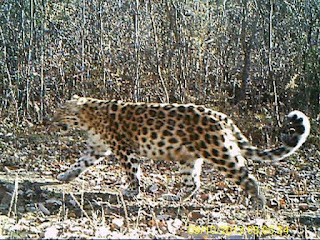Animal
LEOPARD
Habitat
The leopard is very adaptable and can live in many different places across the globe. Leopards are found in sub-Saharan Africa, the Arabian Peninsula, southwestern and eastern Turkey, in the Sinai/Judean Desert of Southwest Asia, the Himalayan foothills, India, Russia, China and the islands of Java and Sri Lanka, according to the International Union for Conservation of Nature (IUCN). These large cats can live in almost any type of habitat, including rainforests, deserts, woodlands, grassland savannas, forests, mountain habitats, coastal scrubs, shrub lands and swampy areas. In fact, leopards live in more places than any other large cat.
The leopard is a solitary animal of the bush and forest and is mainly nocturnal in habit, although it sometimes basks in the sun. It is an agile climber and frequently stores the remains of its kills in the branches of a tree. It feeds upon any animals it can overpower, from small rodents to waterbuck, but generally preys on the smaller and medium-sized antelopes and deer; it appears to have a special liking for dogs as food and, in Africa, for baboons. It sometimes takes livestock and may attack human beings.
10 LEOPARD FACT
1. Most leopards are light coloured and have dark spots on their fur. These spots are called “rosettes” because their shape is similar to that of a rose. There are also black leopards, too, whose spots are hard to see because their fur is so dark.
2. Leopards can be found in various places around the world – they live in Sub-Saharan Africa, northeast Africa, Central Asia, India and China.
3. Leopards are fast felines and can run at up to 58km/h! They’re super springy, too, and can leap 6mforward through the air – that’s the length of three adults lying head to toe!
4. Leopards are very solitary and spend most of their time alone. They each have their own territory, and leave scratches on trees, urine scent marks and poop to warn other leopards to stay away! Males and females will cross territories, but only to mate.
5. These big cats have a varied dietand enjoy different kinds of grub. They eat bugs, fish, antelope, monkeys, rodents, deer…in fact, pretty much any prey that is available!
6. Leopards are skilled climbers, and like to rest in the branches of trees during the day. They are strong beasts, too, and can carry their heavy prey up into the trees so that pesky scavengers, such as hyenas, don’t steal their meal!
7. Nocturnal animals, leopards are active at night when they venture out in search for food. They mostly spend their days resting, camouflaged in the trees or hiding in caves.
8. When it comes to hunting for food, these big cats know their stuff! When a leopard spots a potential meal, it approaches with legs bent and head low, so as not to be seen. It then stalks its preycarefully and quietly, until it’s five to ten metres within range. Then…. pounce! The leopard dashes forward and takes down its victim with a bite to the throat or neck. Small prey, such as small birds or mice, will receive a fatal blow from the feline’s paw. Ouch!
9. Female leopards give birth any time of the year – when they do, they usually give birth to two or three cubs. Mothers stay with their cubs until they are about two years old, when they are old enough to hunt and take care of themselves.
10. Leopards communicate with each other through distinctive calls. For instance, when a male wants to make another leopard aware of his presence, he’ll make a hoarse, raspy cough. They also growl when angry and, like domestic cats, purr when happy and relaxed.
Questions
1. what is the weight of a males leopard?
2. What is the weight of a fameles leopard?
3. what is the speed that can be achieved by leopards?
4. Why leopard have skilled climbers?
5. how many leopards are born in one birth?
Questions
1. what is the weight of a males leopard?
2. What is the weight of a fameles leopard?
3. what is the speed that can be achieved by leopards?
4. Why leopard have skilled climbers?
5. how many leopards are born in one birth?
https://drive.google.com/file/d/1DFfmvOGTAx2-zP-pemtWXqdGYudS2XNg/view?usp=drivesdk
Thank for your attention
May be useful for you guys
See you again:v






Komentar
Posting Komentar